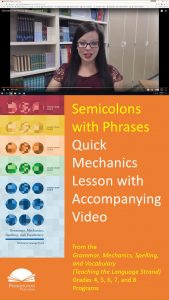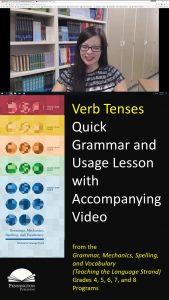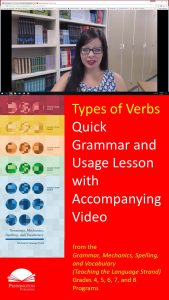Apostrophes with Singular Possessive Nouns
Apostrophes with Singular Possessive Nouns
Play the quick video lesson HERE and click the upper left back arrow to return to this lesson.
Common Core Language Standard 2
The apostrophe is the punctuation mark that plays the most roles. It acts in contractions to signal deletions, such as in can’t to mean “get rid of the “o.” The apostrophe also acts as a single ending quotation mark with a quotation inside of a quotation, such as in “Their service is not ‘the best you can get’ as they say.” Lastly, the apostrophe serves as a possessive.
Today’s mechanics lesson is on using apostrophes with singular possessives.
Now let’s read the mechanics lesson and study the examples.
A possessive noun shows ownership. To form a singular possessive noun, add on an apostrophe then an s (’s) to the end of the noun. For nouns ending in s, it is not necessary to add on another s after the apostrophe. Examples: Tim’s wallet, Doris’ purse
A singular possessive noun can also modify a gerund (a verb form ending in “ing” that serves as a noun). Example: Len’s training
Now circle or highlight what is right and revise what is wrong according to mechanics lesson.
Practice: Emma’s grilling and Charle’s hospitality made the barbecue a success.
Let’s check the Practice Answers.
Mechanics Practice Answers: Emma’s grilling and Charles’ hospitality made the barbecue a success.
Now let’s apply what we have learned.
Writing Application: Write your own sentences using a singular possessive noun and a singular possessive gerund.
*****

Pennington Publishing Grammar Programs
Teaching Grammar, Usage, and Mechanics (Grades 4, 5, 6, 7, 8, and High School) are full-year, traditional, grade-level grammar, usage, and mechanics programs with plenty of remedial practice to help students catch up while they keep up with grade-level standards. Twice-per-week, 30-minute, no prep lessons in print or interactive Google slides with a fun secret agent theme. Simple sentence diagrams, mentor texts, video lessons, sentence dictations. Plenty of practice in the writing context. Includes biweekly tests and a final exam.
Grammar, Usage, and Mechanics Interactive Notebook (Grades 4‒8) is a full-year, no prep interactive notebook without all the mess. Twice-per-week, 30-minute, no prep grammar, usage, and mechanics lessons, formatted in Cornell Notes with cartoon response, writing application, 3D graphic organizers (easy cut and paste foldables), and great resource links. No need to create a teacher INB for student make-up work—it’s done for you! Plus, get remedial worksheets, biweekly tests, and a final exam.
Syntax in Reading and Writing is a function-based, sentence-level syntax program, designed to build reading comprehension and increase writing sophistication. The 18 parts of speech, phrases, and clauses lessons are each leveled from basic (elementary) to advanced (middle and high school) and feature 5 lesson components (10–15 minutes each): 1. Learn It! 2. Identify It! 3. Explain It! (analysis of challenging sentences) 4. Revise It! (kernel sentences, sentence expansion, syntactic manipulation) 5. Create It! (Short writing application with the syntactic focus in different genre).
Get the Diagnostic Grammar, Usage, and Mechanics Assessments, Matrix, and Final Exam FREE Resource:
![]()

 Subject Case Pronouns
Subject Case Pronouns 




